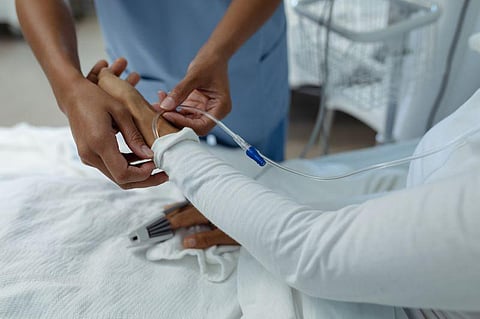THURSDAY, Nov. 3, 2022 (HealthDay News) -- Faulty readings by pulse oximeters may have resulted in more COVID-19 deaths among minorities, doctors warned in testimony before a U.S. Food and Drug Administration advisory panel this week.
The devices appear to be inaccurately reading oxygen levels of people who are Black and others with darker skin, The New York Times reported. The panel urged the FDA to raise accuracy standards, as well as to alert doctors and consumers to the dangerous flaws.
They "most likely contributed to the several-fold greater number of deaths in COVID-19 in ethnic minority patients than in White patients," Amal Jubran, M.D., a pulmonary critical care doctor at Loyola Medicine in Chicago, testified, The Times reported.
This is not a new problem, but it was one that emphasized disparities during the pandemic. Jubran was among the physicians to identify inaccurate readings in people with darker skin color back in 1990, The Times reported. While a pulse oximeter may show healthy blood-oxygen levels in darker-skinned patients, blood tests often reveal different results.
The over-the-counter versions of the devices have virtually no oversight. The FDA reviews prescription versions and those used in hospitals, but both appear to be inaccurate, The Times said.
The agency flagged accuracy concerns in 2021. This prompted Tuesday's 10-hour meeting, which ended with suggestions about measures the FDA could take but no formal vote. Ideas included adding warnings to product labels and requiring manufacturers to produce products with more accurate readings to receive approval, the newspaper reported.
Studies that evaluate device performance on people of varying skin tones and chronic medical conditions are also necessary, doctors testified. Past research includes a University of Michigan study that revealed elevated readings in Black people, distorting what were actually significantly low blood oxygen levels in nearly 12 percent of Black people and 4 percent of White people. Doctors at the Johns Hopkins University School of Medicine in Baltimore confirmed the disparity again and noted the result: A study by Johns Hopkins University School of Medicine showed that Black patients were 29 percent less likely to be found to be candidates for COVID-19 treatments. The same was true for 23 percent of Hispanic patients.
The New York Times Article


